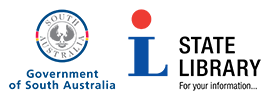
Australia begins to appear on the world map |
|||
|---|---|---|---|
| Title : | Australia begins to appear on the world map |

|
|
| Creator : | Colom, Arnold, 1624-1668 | ||
| Source : | Zee-atlas, ofte water-wereldt | ||
| Place Of Creation : | Amsterdam | ||
| Publisher : | de Nieuwen-brugh | ||
| Date of creation : | [1658] | ||
| Additional Creator : | York Gate Library | ||
| Format : | Book | ||
| Contributor : | Royal Geographical Society of South Australia Inc | ||
| Catalogue record | |||
| The State Library of South Australia is keen to find out more about SA Memory items. We encourage you to contact the Library if you have additional information about any of these items. | |||
| Copyright : | This item is reproduced courtesy of Royal Geographical Society of South Australia Inc. It may be printed or saved for research or study. Use for any other purpose requires written permission from Royal Geographical Society of South Australia Inc and the State Library of South Australia. To request approval, complete the Permission to publish form. |
| Description : |
For hundreds of years it was believed that there was a large continent in the southern hemisphere to balance the weight of the land in the northern hemisphere. This hypothetical land mass was variously called Terra Australis nondum cognita or Terra Australis incognita, and was long sought after. In 1606 the first discoveries of the coast of what we now call Australia were made by the Dutchman Willem Jansz in his vessel Duyfken. The Dutch considered the stretch of coast discovered may in fact have been a part of the large island of New Guinea. In fact it was the west coast of Cape York Peninsula, Queensland and following this discovery more landfalls were made on what is now the west coast of Australia. In 1627 Pieter Nuyts and Francois Thijssen in 't Gulden Zeepaerdt discovered the first section of the South Australian coastline as far as the Islands of Saint Francis and Saint Peter off Ceduna. These discoveries gradually began to appear in maps of Asia or the East Indies (Indonesia), and of the world. This scant appearance of the Australian coast appears in the right-hand hemisphere of Arnold Colom's world map published in 1658.
The Dutch continued their explorations, notably sending out Abel Tasman in 1642. On this voyage he discovered southern Tasmania which he named Van Diemen's Land and the west coast of New Zealand. He was sent out again in 1643-44 and discovered parts of the northern Australian coastline. The discovery by Tasman of Van Diemen's Land does not appear on Colom's maps of the world or of the East Indies. Arnold Colom together with his father Jacob produced many fine atlases, including the more specialised maritime or sea atlases. A sea atlas noticeably provides no detail of the interior of countries but only the detail of the surrounding seas, with coasts, reefs, islands mapped. These sea atlases were in fact intended for use ashore in offices and libraries, rather than for navigation aboard ship, for which more detailed charts would be required. |
| Subjects | |
| Related names : | Colom, Arnold, 1624-1668 Jansz, Willem Duyfken (Ship) Nuyts, Pieter, 1598-1653 |
| Period : | Pre-1836 |
| Place : | Australia |
| Further reading : | Schilder, Gunter Australia unveiled: the share of the Dutch navigators in the discovery of Australia Amsterdam: Theatrum Orbis Terrarum, 1976
Heeres, J. E. The part borne by the Dutch in the discovery of Australia, 1606-1765 London: Luzac, 1899 Heath, Byron Discovering the Great South Land Kenthurst: Rosenberg Publishing, 2005 This is what happened: historical narratives by Aborigines; edited by Luise Hercus and Peter Sutton Canberra: Australian Institute of Aboriginal Studies, c1986 Chapter 7: Dutchmen at Cape Keerweer: Wik-ngatharra story |
| Internet links : | |
| Exhibitions and events : | State Library of South Australia: Mortlock Wing. Taking it to the edge August 2004- |


